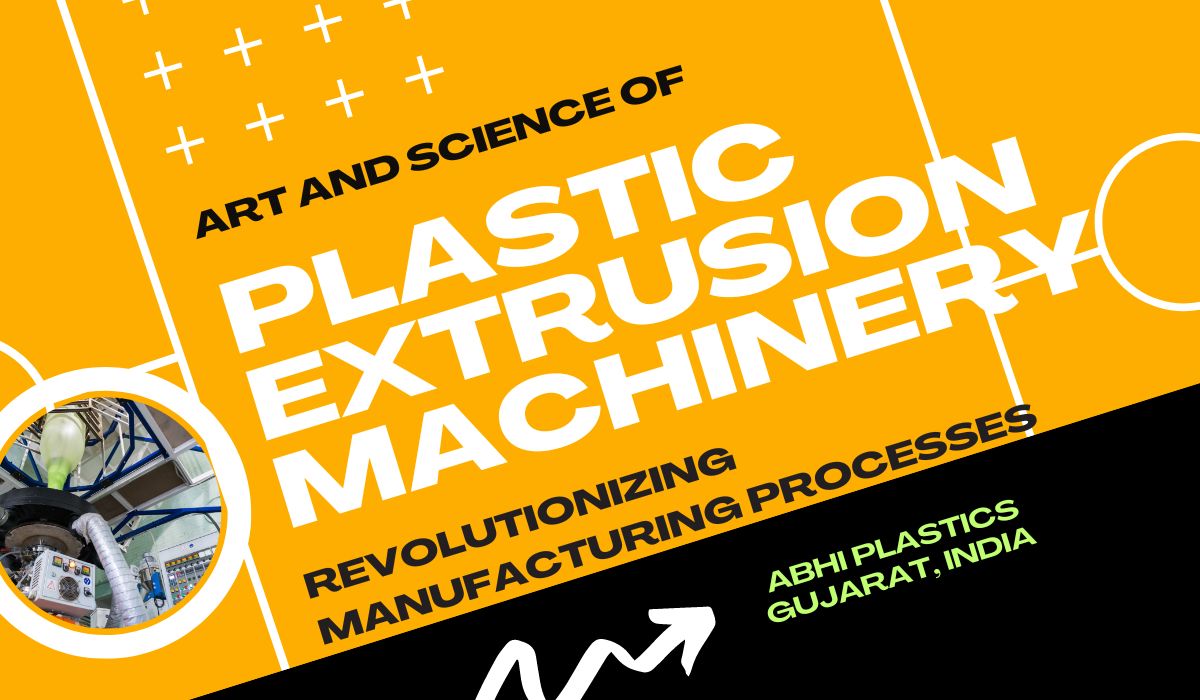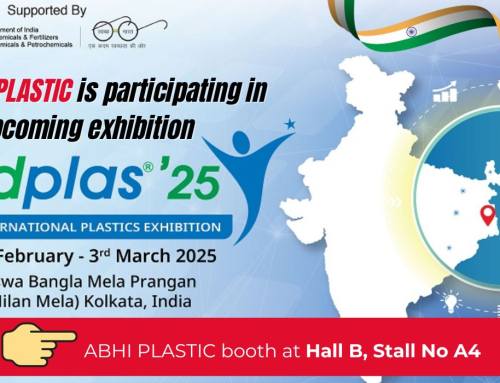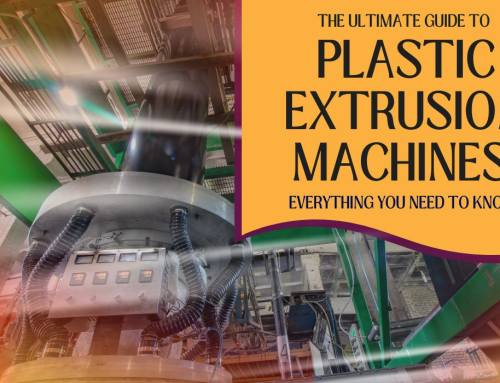Welcome to the world of plastic extrusion machinery, where art and science converge to revolutionize manufacturing processes. In this article, we will explore the intricate mechanics and groundbreaking innovations behind this remarkable technology that is shaping industries worldwide.
Plastic extrusion is a manufacturing technique that involves melting raw plastic materials and shaping them into a continuous profile. From pipes and tubing to filaments and sheets, plastic extrusion machinery can produce a wide range of products with unmatched precision and efficiency.
But it’s not just about the machinery – it’s an art form. Skilled technicians and engineers carefully orchestrate the extrusion process, ensuring the right temperature, pressure, and speed are used to achieve the desired product specifications. Their expertise blends seamlessly with the scientific principles of thermodynamics and rheology to create flawless end products that meet the highest standards of quality.
With advancements in technology, plastic extrusion machinery continues to push the boundaries of what is possible. From automating processes to incorporating intelligent control systems, manufacturers are constantly innovating to enhance efficiency and reduce waste.
Join us as we delve into the captivating world of plastic extrusion machinery and discover how it is transforming the manufacturing landscape, one exquisite product at a time.
Understanding the Manufacturing Process
The plastic extrusion process is a complex and intricate manufacturing technique that involves melting raw plastic materials and shaping them into a continuous profile. At the heart of this process lies a specialized machine known as the plastic extruder. This machine is designed to take in solid plastic pellets or granules, heat them to a molten state, and then force the melted material through a die to create the desired shape.
The extrusion process begins with the feeding of the raw plastic material into the extruder’s hopper. The material is then transported by a rotating screw, which is the primary component of the extruder, into the barrel. As the screw rotates, the plastic is subjected to intense heat, typically generated by electric heaters or a heated barrel, which melts the material. The melted plastic is then forced through a die, which gives the extruded product its final shape and size.
The die is a critical component of the extrusion process, as it determines the shape and dimensions of the final product. Designers and engineers work closely with the die to ensure that the extruded material meets the desired specifications, whether it’s a simple pipe or a complex profile. The extruded product is then cooled, often using water or air, to solidify the plastic and maintain its shape before being cut or wound onto a spool for further processing or packaging.
Advantages of Plastic Extrusion Machinery
One of the primary advantages of plastic extrusion machinery is its ability to produce large quantities of consistent, high-quality products with remarkable efficiency. The continuous nature of the extrusion process allows for a steady output of materials, reducing downtime and increasing productivity. This makes plastic extrusion an ideal choice for industries that require large-scale production, such as construction, packaging, and consumer goods.
Another significant advantage of plastic extrusion machinery is its versatility. Extruders can be configured to handle a wide range of plastic materials, from thermoplastics like polyethylene and polypropylene to more specialized materials like PVC and polycarbonate. This flexibility allows manufacturers to adapt their production to meet changing market demands and customer preferences.
Plastic extrusion machinery also offers a high degree of precision and control over the final product. By carefully adjusting the temperature, pressure, and speed of the extrusion process, operators can ensure that the extruded material meets the required specifications in terms of dimensions, surface finish, and mechanical properties. This level of control is crucial for industries that require tight tolerances, such as the automotive and medical sectors.
Types of Plastic Extrusion Machinery
The world of plastic extrusion machinery is diverse, with a range of specialized machines designed to meet the unique needs of various industries and applications. Some of the most common types of plastic extrusion machinery include:
Single-screw extruders: These are the most widely used type of extruder, featuring a single rotating screw that transports and melts the plastic material. Single-screw extruders are known for their simplicity, reliability, and cost-effectiveness, making them a popular choice for a wide range of applications.
Twin-screw extruders: These extruders feature two rotating screws that work in tandem to mix, melt, and transport the plastic material. Twin-screw extruders are particularly well-suited for processing more complex or challenging materials, such as filled or reinforced plastics, as well as for compounding and reactive extrusion processes.
Blown film extruders: Designed specifically for the production of plastic films, blown film extruders use a circular die to extrude a thin, tubular film that is then inflated with air and cooled, resulting in a high-quality, uniform film product.
Sheet extrusion lines: These specialized extrusion systems are used to produce flat, continuous sheets of plastic material, which can then be used in a variety of applications, such as thermoforming, packaging, and signage.
Specialty extruders: In addition to the more common types, there are also a number of specialty extruders designed for specific applications, such as wire and cable coating, profile extrusion, and co-extrusion (the simultaneous extrusion of multiple layers of different materials).
Key Components and Functions of a Plastic Extrusion Machine
At the heart of a plastic extrusion machine lies the extruder, which is responsible for melting and transporting the raw plastic material. The key components of a typical extruder include:
The hopper: This is where the solid plastic pellets or granules are fed into the machine. The hopper is designed to ensure a consistent and continuous supply of material to the extruder.
The screw: The rotating screw is the primary component of the extruder, responsible for conveying the plastic material from the hopper into the barrel, where it is melted and pressurized.
The barrel: The barrel surrounds the screw and is typically heated to melt the plastic material. The barrel may also be cooled in certain sections to maintain the desired temperature profile.
The die: The die is the shaping component of the extrusion machine, determining the final shape and dimensions of the extruded product. Dies can be designed in a wide variety of configurations to produce different shapes and profiles.
The cooling system: After the plastic material is extruded through the die, it must be cooled to solidify and maintain its shape. This is typically done using water baths, air cooling, or a combination of both.
The haul-off and cutting system: The extruded product is pulled away from the die by a haul-off system, which may also include a cutting mechanism to cut the material into the desired lengths.
These key components work together in a carefully orchestrated dance, with each element playing a crucial role in the overall efficiency and quality of the extrusion process.
Factors to Consider When Choosing a Plastic Extrusion Machine
When selecting a plastic extrusion machine, there are several important factors to consider to ensure that the chosen equipment meets the specific needs of the manufacturing operation. Some of the key factors include:
Material compatibility: The extruder must be able to handle the specific type of plastic material being used, with the appropriate screw design, barrel temperature, and die configuration to ensure optimal processing.
Production volume and output: The capacity and throughput of the extruder must be matched to the production requirements, taking into account factors such as desired product dimensions, line speed, and overall output.
Energy efficiency: Extruders with advanced features like variable-speed drives and efficient heating and cooling systems can help reduce energy consumption and operating costs.
Automation and control: Integrated control systems and automated features can enhance the precision, consistency, and efficiency of the extrusion process, reducing the need for manual intervention.
Footprint and layout: The physical size and configuration of the extruder, as well as its integration with other equipment in the production line, must be carefully considered to optimize the use of available space.
Maintenance and service: The ease of maintenance, availability of spare parts, and quality of after-sales support are all important factors in ensuring the long-term reliability and performance of the extrusion machinery.
By carefully evaluating these factors, manufacturers can select the most appropriate plastic extrusion machine to meet their specific production needs and maintain a competitive edge in the market.
Common Applications of Plastic Extrusion Machinery
Plastic extrusion machinery is used in a wide range of industries, producing a diverse array of products that are essential to our daily lives. Some of the most common applications include:
Construction and infrastructure: Plastic extrusion is used to manufacture pipes, conduits, and profiles for building and infrastructure projects, as well as window frames, siding, and decking materials.
Packaging and consumer goods: Extrusion processes are used to produce plastic films, sheets, and containers for food, beverages, and other consumer products, as well as plastic bags, bottles, and other packaging materials.
Automotive and transportation: Plastic extrusion is used to create a variety of components for the automotive industry, such as door panels, dashboards, and trim pieces, as well as parts for other transportation modes like aircraft and trains.
Electrical and electronics: Plastic extrusion is used to produce wire and cable insulation, as well as housing and enclosures for electronic devices and appliances.
Medical and healthcare: Plastic extrusion is used to manufacture a range of medical devices, including tubing, catheters, and other specialized products that require high levels of precision and cleanliness.
These are just a few examples of the diverse applications of plastic extrusion machinery. As technology continues to advance, the versatility and capabilities of these machines are expected to expand even further, opening up new opportunities for innovation and growth across a wide range of industries.
Latest Advancements and Innovations in Plastic Extrusion Technology
The world of plastic extrusion is constantly evolving, with manufacturers and researchers continuously pushing the boundaries of what is possible. Some of the latest advancements and innovations in this field include:
Intelligent control systems: Advancements in automation and control technologies have enabled the development of sophisticated control systems that can precisely monitor and adjust the extrusion process in real-time, improving product quality and consistency while reducing waste and downtime.
Sustainable material processing: As the demand for environmentally-friendly products grows, extrusion machinery is being designed to handle a wider range of sustainable and recycled plastic materials, such as biodegradable bioplastics and post-consumer recycled plastics.
Multi-layer and co-extrusion: Innovative extrusion techniques, such as multi-layer and co-extrusion, allow for the production of complex, layered products with unique properties and functionalities, meeting the needs of an ever-evolving marketplace.
Additive manufacturing integration: The integration of 3D printing and additive manufacturing technologies with extrusion machinery is enabling the creation of customized, on-demand plastic products, revolutionizing the manufacturing landscape.
Predictive maintenance and IoT: The integration of internet-of-things (IoT) technologies and predictive maintenance algorithms is allowing for the remote monitoring and optimization of extrusion machinery, improving efficiency, reducing downtime, and extending the lifespan of the equipment.
These advancements, along with ongoing research and development, are driving the plastic extrusion industry forward, enabling manufacturers to create more innovative, efficient, and sustainable products that meet the evolving needs of the market.
Maintenance and Troubleshooting Tips for Plastic Extrusion Machinery
Proper maintenance and troubleshooting are crucial for ensuring the long-term performance and reliability of plastic extrusion machinery. Some key tips for maintaining and troubleshooting these machines include:
Regular inspections and preventive maintenance: Establishing a comprehensive preventive maintenance schedule, including inspections of critical components like the screw, barrel, and die, can help identify and address issues before they lead to costly downtime or product quality problems.
Lubrication and cleaning: Regularly lubricating moving parts and cleaning the extruder’s components, such as the hopper, screw, and die, can help prevent wear and ensure smooth, efficient operation.
Temperature and pressure monitoring: Closely monitoring the temperature and pressure throughout the extrusion process can help identify potential issues, such as material degradation, die blockages, or wear on the screw or barrel.
Troubleshooting common issues: Being proactive in addressing common problems, such as melt fracture, die lip buildup, or inconsistent product dimensions, can help minimize downtime and maintain product quality.
Skilled operators and technicians: Investing in well-trained and experienced operators and maintenance technicians is essential for ensuring the proper operation, maintenance, and troubleshooting of plastic extrusion machinery.
By implementing these best practices and staying up-to-date with the latest maintenance and troubleshooting techniques, manufacturers can maximize the performance and lifespan of their plastic extrusion equipment, ultimately improving their overall production efficiency and profitability.
The Future of Plastic Extrusion Machinery in Manufacturing Processes
As the world continues to evolve and the demands of the manufacturing landscape change, the future of plastic extrusion machinery is poised to be both exciting and transformative. Here are some of the key trends and developments that are shaping the future of this industry:
Increased automation and integration: The ongoing advancements in automation, robotics, and control systems will continue to drive the integration of plastic extrusion machinery with other manufacturing processes, enabling greater efficiency, precision, and flexibility in production.
Sustainable and eco-friendly technologies: In response to growing environmental concerns, the plastic extrusion industry is poised to see a significant shift towards the development and adoption of sustainable materials, energy-efficient technologies, and closed-loop recycling systems.
Personalization and customization: The integration of additive manufacturing and 3D printing technologies with extrusion machinery will allow for the production of highly customized, on-demand plastic products, catering to the increasing demand for personalized goods.
Intelligent and connected systems: The integration of internet-of-things (IoT) technologies, artificial intelligence, and predictive analytics will enable the development of “smart” extrusion machines that can self-monitor, self-diagnose, and optimize their performance, reducing downtime and enhancing overall productivity.
Expanded material capabilities: As new and innovative plastic materials continue to emerge, extrusion machinery will need to evolve to accommodate these advancements, opening up new applications and opportunities for manufacturers across a wide range of industries.
By embracing these future trends and innovations, the plastic extrusion industry is poised to play an increasingly vital role in shaping the manufacturing landscape of tomorrow, driving innovation, sustainability, and efficiency in the production of a wide range of essential products.








Leave A Comment